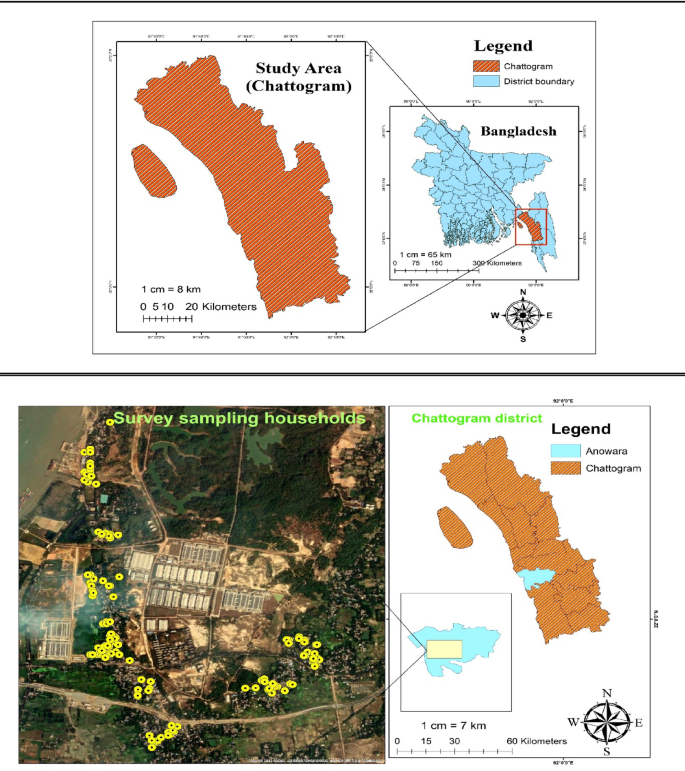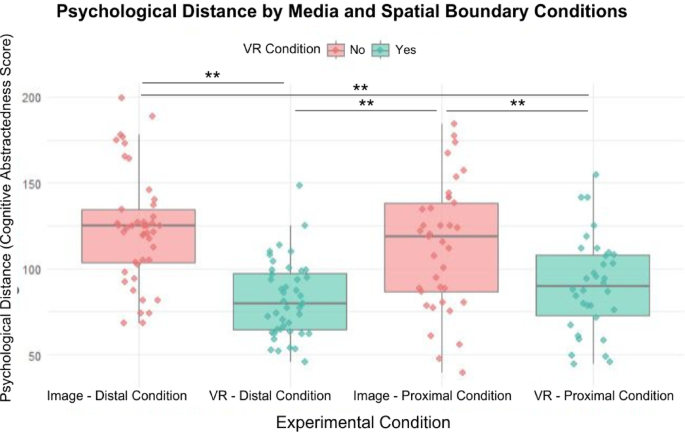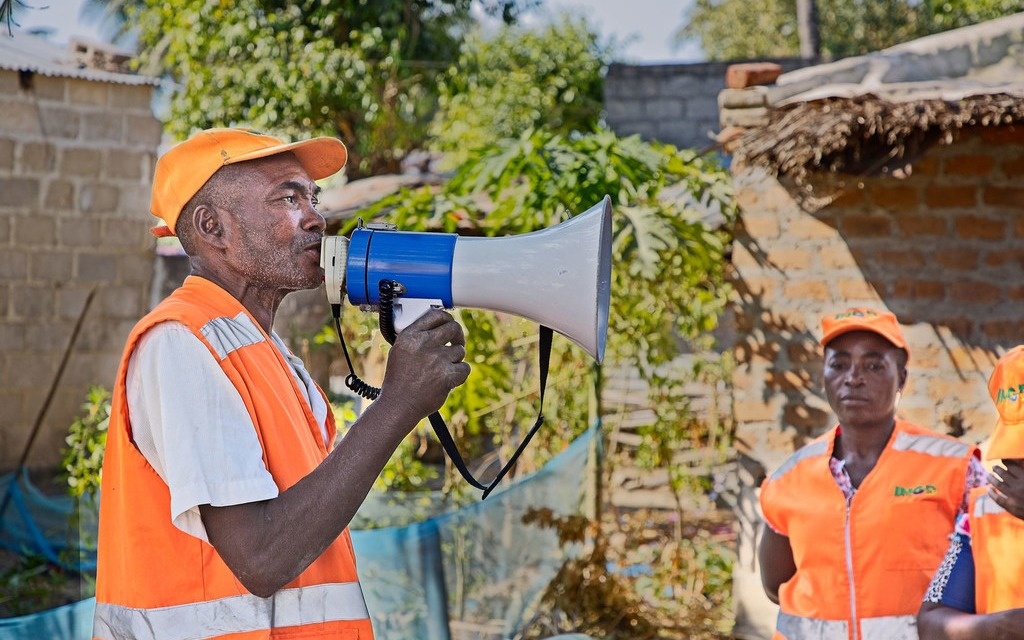Report on Household-Level Climate Change Mitigation and Sustainable Development Goals in Bangladesh
Executive Summary
A holistic analysis was conducted in Anowara Upazila, Chattogram, Bangladesh, to quantify the climate change mitigation potential at the household level, with a significant focus on its contributions to the Sustainable Development Goals (SDGs). The study assessed carbon storage in homegarden trees and wooden furniture, the substitution potential of wood products, and the use of renewable energy. Findings indicate that sustainable household practices can substantially advance several SDGs, particularly SDG 13 (Climate Action), SDG 7 (Affordable and Clean Energy), SDG 12 (Responsible Consumption and Production), SDG 15 (Life on Land), and SDG 1 (No Poverty). The report highlights that homegarden trees store an average of 42 Mg CO2 per hectare, and the adoption of wooden furniture and biogas technology offers significant emission reduction pathways. These household-level actions, when supported by policy, can strengthen Bangladesh’s Nationally Determined Contributions (NDCs) and create opportunities for rural communities through carbon markets, directly supporting the 2030 Agenda for Sustainable Development.
Introduction: Aligning Household Actions with Global Goals
Climate change, driven by greenhouse gas (GHG) emissions, presents a global challenge that requires localized solutions. In Bangladesh, where CO2 emissions are rising, household-level actions are critical for national mitigation efforts and achieving the SDGs. This report examines the untapped potential of rural households to contribute to global sustainability targets. Specifically, it analyzes how the management of homegardens, consumption of wood products, and adoption of renewable energy align with key SDGs. By integrating carbon storage and emission substitution into household practices, communities can play a direct role in:
- SDG 13 (Climate Action): Sequestering carbon in terrestrial ecosystems and reducing GHG emissions from energy consumption.
- SDG 15 (Life on Land): Promoting the sustainable management of small-scale forests like homegardens, thereby protecting biodiversity and terrestrial ecosystems.
- SDG 7 (Affordable and Clean Energy): Transitioning from fossil fuels to renewable sources like biogas and efficiently utilized biomass.
- SDG 12 (Responsible Consumption and Production): Encouraging the use of sustainable materials like wood over fossil fuel-intensive alternatives such as plastic and steel.
- SDG 1 (No Poverty): Creating economic opportunities for rural households through carbon credit mechanisms like the Clean Development Mechanism (CDM) and REDD+.
This study provides a quantitative basis for including these household-level contributions in national climate accounting, thereby strengthening Bangladesh’s commitment to the UNFCCC and the SDGs.
Methodology: Assessing Contributions to SDGs
To quantify household contributions to climate mitigation and the SDGs, a comprehensive study was conducted in Boirag Union, Anowara Upazila. The methodology involved several key steps:
- Household and Homegarden Sampling: A total of 217 households and their respective homegardens were surveyed using simple random techniques. Households were stratified into lower-middle (LM) and upper-middle (UM) income groups to analyze socio-economic influences on sustainability practices.
- Carbon Storage Quantification (SDG 13 & SDG 15): The carbon stored in live tree biomass within homegardens was estimated. This involved measuring tree height and diameter and applying allometric equations to calculate above-ground and below-ground biomass. This data directly measures contributions to SDG 13 (Climate Action) and SDG 15 (Life on Land).
- Assessment of Wooden Products (SDG 12 & SDG 13): Surveys of households and furniture manufacturers were conducted to determine the volume of wood used in furniture. The carbon stored in these harvested wood products (HWPs) was calculated. Furthermore, the substitution benefit—representing avoided emissions by choosing wood over fossil fuel-intensive materials—was quantified to assess progress toward SDG 12 (Responsible Consumption and Production).
- Renewable Energy Potential Analysis (SDG 7): Household energy consumption patterns, including electricity, LPG, and fuelwood, were recorded. The potential for emission reduction was calculated by modeling a switch to renewable energy sources, such as biogas from kitchen waste, cowdung, and poultry waste, and the use of improved cooking stoves (ICS). This analysis directly evaluates pathways to achieving SDG 7 (Affordable and Clean Energy).
Key Findings: Quantifying Household Impact on SDGs
The analysis revealed significant potential for rural households to contribute to the Sustainable Development Goals through targeted climate mitigation actions.
Carbon Storage in Homegardens: Supporting SDG 13 and SDG 15
- Homegarden trees stored an average of 42 Mg CO2 per hectare, demonstrating their role as vital carbon sinks that support SDG 13 (Climate Action).
- The most significant carbon storage was found in species such as Albizia lebbeck, Tectona grandis, Acacia auriculiformis, and Swietenia macrophylla.
- Sustainable management of these small-scale forests is a direct contribution to SDG 15 (Life on Land) by preserving local biodiversity and ecosystem services.
Wooden Furniture: Advancing SDG 12 and SDG 13
- The use of wooden furniture provides dual benefits: long-term carbon storage and the substitution of high-emission materials, directly aligning with SDG 12 (Responsible Consumption and Production).
- Carbon storage and substitution benefits were significantly higher in upper-middle (UM) income households (2.07 and 2.32 Mg CO2 household−1 year−1, respectively) compared to lower-middle (LM) income households (1.2 and 1.34 Mg CO2 household−1 year−1).
- This indicates that as incomes rise, promoting wooden furniture can accelerate progress on SDG 13 by locking away carbon and avoiding industrial emissions.
Renewable Energy Transition: Achieving SDG 7
- UM households generated higher emissions from fossil fuels (electricity and LPG) than LM households, highlighting a need for targeted interventions.
- A transition to renewable energy offers substantial emission reductions, contributing to SDG 7 (Affordable and Clean Energy).
- The emission reduction potential from using biogas was significantly higher in UM households (2.43 Mg CO2 household−1 year−1) than in LM households (1.87 Mg CO2 household−1 year−1), due to greater availability of organic waste.
- Utilizing biogas from kitchen waste, poultry waste, and cowdung presents a viable, clean energy alternative that reduces reliance on fossil fuels and traditional biomass.
Conclusion and Policy Recommendations for SDG Attainment
The findings confirm that rural households in Bangladesh can be powerful agents in achieving the Sustainable Development Goals. Implementing sustainable management of homegardens, promoting the use of wooden furniture, and transitioning to renewable energy sources like biogas create a synergistic impact on climate, environment, and livelihoods.
To harness this potential, the following policy recommendations are proposed:
- Integrate Household Actions into National Policy: The carbon benefits from homegardens, harvested wood products, and renewable energy should be formally included in Bangladesh’s national accounting system for NDCs to better reflect the country’s commitment to SDG 13.
- Promote Carbon Farming and Markets (SDG 1 & SDG 13): Establish mechanisms like REDD+ and CDM for homegardeners to generate carbon credits. This will provide a financial incentive for sustainable land management, contributing to SDG 1 (No Poverty) while sequestering carbon.
- Support Renewable Energy Adoption (SDG 7): Provide subsidies and technical support for the installation of biogas plants and the dissemination of improved cooking stoves (ICS) in rural areas to ensure a just transition to affordable and clean energy.
- Foster a Sustainable Bioeconomy (SDG 12): Develop policies that encourage the use of locally sourced wood for furniture and construction. Consumer awareness campaigns can highlight the climate benefits of wood, promoting responsible consumption patterns across all income levels and advancing SDG 12.
By empowering households through supportive policies, Bangladesh can accelerate its progress towards a sustainable, low-carbon future in line with the 2030 Agenda.
Analysis of Sustainable Development Goals (SDGs) in the Article
1. Which SDGs are addressed or connected to the issues highlighted in the article?
The article addresses and connects to several Sustainable Development Goals (SDGs) through its focus on climate change mitigation at the household level in Bangladesh. The analysis of carbon storage, renewable energy, and sustainable material use directly relates to the following SDGs:
- SDG 1: No Poverty: The article suggests that creating carbon markets and providing credits for sustainable practices like managing homegardens and using renewable energy can improve rural livelihoods and offer economic benefits, contributing to poverty reduction.
- SDG 7: Affordable and Clean Energy: The research quantifies the potential of using renewable energy sources, such as biogas from kitchen waste, poultry waste, and cowdung, as alternatives to fossil fuels (LPG) and inefficient biomass burning. It also highlights the role of improved cooking stoves (ICS) in reducing fuel consumption, directly aligning with the goal of ensuring access to clean and affordable energy.
- SDG 12: Responsible Consumption and Production: The study promotes sustainable consumption and production by advocating for the use of harvested wood products (wooden furniture) as a substitute for fossil fuel-intensive materials like steel and plastic. It also emphasizes waste reduction by utilizing organic waste for biogas production.
- SDG 13: Climate Action: This is the central theme of the article. The entire study is dedicated to quantifying climate change mitigation potential through carbon storage in homegarden trees and wooden furniture, and reducing greenhouse gas emissions by substituting fossil fuels with renewable energy. The findings are presented as a way to strengthen Bangladesh’s Nationally Determined Contributions (NDCs).
- SDG 15: Life on Land: The article highlights the importance of homegardens as small-scale terrestrial ecosystems for carbon sequestration. By quantifying the carbon stored in these homegarden trees, it underscores the role of sustainable management of these “trees outside forests” in protecting and restoring terrestrial ecosystems.
2. What specific targets under those SDGs can be identified based on the article’s content?
Based on the article’s focus, the following specific SDG targets can be identified:
- Under SDG 7 (Affordable and Clean Energy):
- Target 7.1: By 2030, ensure universal access to affordable, reliable and modern energy services. The article supports this by exploring financially feasible options like biogas and ICS for rural households in Bangladesh.
- Target 7.2: By 2030, increase substantially the share of renewable energy in the global energy mix. The research directly addresses this by quantifying the potential of biogas from organic waste as a renewable energy source for cooking.
- Under SDG 12 (Responsible Consumption and Production):
- Target 12.2: By 2030, achieve the sustainable management and efficient use of natural resources. The article promotes this by analyzing the use of wood from sustainably managed homegardens for furniture, which is a renewable resource.
- Target 12.5: By 2030, substantially reduce waste generation through prevention, reduction, recycling and reuse. The study directly supports this target by proposing the use of kitchen waste, poultry waste, and cowdung for biogas generation, turning waste into a resource.
- Under SDG 13 (Climate Action):
- Target 13.2: Integrate climate change measures into national policies, strategies and planning. The article explicitly suggests that its findings on carbon benefits from homegardens and wood products should be included in the national accounting system for NDCs to strengthen the country’s climate commitments.
- Under SDG 15 (Life on Land):
- Target 15.2: By 2020, promote the implementation of sustainable management of all types of forests, halt deforestation, restore degraded forests and substantially increase afforestation and reforestation globally. The article contributes to this by demonstrating the carbon storage potential of homegardens, advocating for their sustainable management as a form of small-scale forestry.
3. Are there any indicators mentioned or implied in the article that can be used to measure progress towards the identified targets?
Yes, the article provides several quantitative indicators that can be used to measure progress towards the identified targets. These are either directly mentioned or strongly implied by the data presented:
- Indicators for SDG 7 & 13 (Clean Energy & Climate Action):
- CO₂ Emission Reduction from Renewable Energy: The net emission reduction potential from using biogas is quantified in Mg CO₂ per household per year (e.g., “2.43 Mg CO₂ household⁻¹ year⁻¹” for the upper-middle income group).
- Efficiency of Cooking Technologies: The article states that improved cooking stoves (ICS) reduce CO₂ emissions by 25% compared to traditional stoves, providing a clear metric for emission reduction.
- Fossil Fuel Consumption Reduction: The amount of fossil fuels (LPG, electricity) that can be replaced by biogas serves as an indicator of reduced reliance on non-renewable energy.
- Indicators for SDG 12 & 13 (Responsible Consumption & Climate Action):
- Carbon Storage in Harvested Wood Products (HWPs): The amount of carbon stored in wooden furniture is measured as “Cwood” in Mg CO₂ per household per year (e.g., 2.07 Mg CO₂ household⁻¹ year⁻¹ for the upper-middle income group).
- Substitution Benefits of Sustainable Materials: The avoided emissions from substituting fossil fuel-intensive furniture with wood is quantified as “Csub” (e.g., 2.32 Mg CO₂ household⁻¹ year⁻¹ for the upper-middle income group).
- Waste Utilization Rate: The quantities of kitchen waste, poultry waste, and cowdung used for biogas generation can be measured to track progress on waste reduction and reuse.
- Indicators for SDG 15 & 13 (Life on Land & Climate Action):
- Carbon Stock in Terrestrial Ecosystems: The carbon storage in homegarden trees is a primary indicator, measured as Mg CO₂ per hectare (“on average 42 Mg CO₂ per hectare”).
- Forest/Tree Density and Health: The article calculates tree density and basal area per hectare, which are standard forestry metrics for assessing the health and carbon-carrying capacity of a terrestrial ecosystem.
4. Table of SDGs, Targets, and Indicators
| SDGs | Targets | Indicators Identified in the Article |
|---|---|---|
| SDG 7: Affordable and Clean Energy | 7.2: Increase substantially the share of renewable energy in the global energy mix. |
|
| SDG 12: Responsible Consumption and Production | 12.2: Achieve the sustainable management and efficient use of natural resources.
12.5: Substantially reduce waste generation through prevention, reduction, recycling and reuse. |
|
| SDG 13: Climate Action | 13.2: Integrate climate change measures into national policies, strategies and planning. |
|
| SDG 15: Life on Land | 15.2: Promote the implementation of sustainable management of all types of forests. |
|
Source: nature.com







